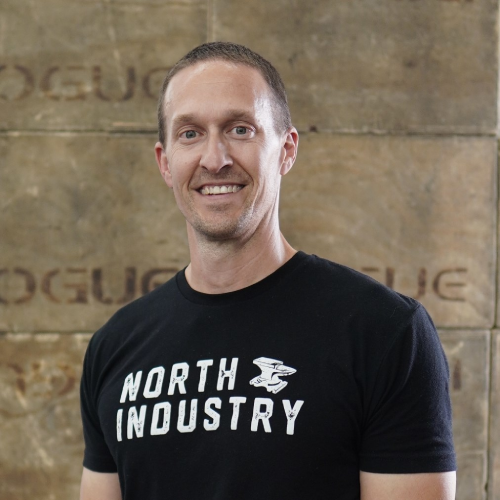In a previous article I covered the importance of updating our thinking. That the world is always changing—imperceptibly at times—and if we don’t update our thinking, we will not be able to make accurate decisions on how to best live our lives. I used the analogy of there being a recall on your new car for a faulty accelerator. Not getting this “updated information” leaves you “blind” to something about your world, which could be catastrophic. If you haven’t read the first article, click HERE. Information is critical to making decisions on living a good life, and therefore keeping yourself updated is vitally important.
We covered Point 1 in the first article, now we will tackle Point 2:
- Updating our thinking is critical for anyone who wants to be accurate with their decision making.
- Being able to update your thinking quickly and with minimal emotion is a skill which can be learned and improved with practice using numbers.
In order to be good at point one, we need to be good at point two because sometimes those updates are going to be emotional. No problem if the update is you inherited $10 million (although the emotion of that has destroyed lives. I think the number is 90% of lottery winners are broke and worse off within 5 years of winning). But when the update is negative, like you’ve gained 10lbs, we need to have a way to process that information with minimal emotion, so we can use it to change behavior in a positive way. Numbers help bridge the gap.
But first let’s try to understand why change (or new information) can make us so damn emotional. Where is that emotion coming from and how does it affect us?
Emotions are tied to our beliefs. They are tied to our “maps” of the world. These “maps” guide our decisions and inform us what is the right thing to do and think, and what is the wrong thing to do and think. When our maps are “off”, they trigger emotions letting us know we’ve ended up in uncharted territory; that something we thought was “true”, something we based our decision on, may be inaccurate. We have stepped into the unknown. And the unknown is a scary place. That’s where the emotion comes in—it’s scary!
These are old systems. Like really old. Like systems that have alerted you to snakes for millions of years old. The “uncharted territory” may not be a snake. It may just be something you said “off color” around a group of people; or remembering that you forgot to pick something up from the grocery store. Snake, embarrassment, or forgetfulness, doesn’t matter, the reaction is the same… Ahhhh!
When that happens, we can respond in one of two ways. We can pay attention, or we can run (in our minds). We can look at the new information and “see” what it is telling us, or we can ignore it and deny that it is there and do nothing about it. Both are dealing with the emotion. One is dissipating it by looking at and trying to bring understanding to this new information, and the other is burying the information (and therefore the emotion). Understanding is obviously the better/only solution. As you become better at identifying when something is new and unknown, and then get yourself to look at it even though it is uncomfortable, you are on your way to incorporating the updated information, and improving your life. Congratulations!
So, the skill has two parts- One, being able to identify new information, and two, keeping our emotions in check enough to be able to investigate if it requires you to do something about it. Enter numbers.
Numbers are like magic, in that they are what they are. Your emotions or beliefs have no influence on numbers. Numbers don’t care about your feelings. They just tell a story. Without emotion. Without offending. They just tell it how it is. If you can shift your values away from holding your current “map” or beliefs of the world in the highest regard, and move it to holding the “story” that numbers are telling you in the highest regard, you are going to have much better control over your emotions. Easier said than done – but done it can be. And done it must be, if you are to guide your health in the direction that you want it to go.
Here is a great place to start to use numbers to keep your emotions in check and guide yourself to better health:
One: Tracking what you eat. Looking at the number of calories you consume daily is a great place to start. Doing this in an app like My Fitness Pal really helps. When you’ve been tracking for a while and watching the numbers, making adjustments to create your desired outcome will become easier. Once this begins to happen, you will have better control over what you eat. For most people food is an emotional decision. We can lower the emotional response by putting a higher value on the numbers, adjusting them to improve our health over time. It is a shift in focus and value. You are putting more value in how food affects your body—energy, weight, inflammation, digestion, etc.—instead of its flavor. This takes time but anyone can do it. Remember, it is a skill that numbers help facilitate and with consistent effort you will get better.
Two: Time restricted eating. I’m sure most of you have heard of this. It’s becoming really popular as an effective tool for weight control or loss. In TRE we allow ourselves a specific “window” to eat, and when we are outside that window we stop eating or taking in any calories. From 12pm to 8pm, or 8 hours, is common, and it appears to be effective for a large part of the population. TRE seems to be more easily adopted by people. I believe this is due to the fact that it’s binary thinking. On or off. You either are or you are not eating. So, it’s not complicated with a big process and big change to your lifestyle. It’s a “foot in the door” to gaining some control over your eating. Over time this can evolve into more complex and effective strategies. Of course, the number being used here is time. Once you get adjusted to Time Restricted Eating (your new “map”) your emotions will stabilize. Essentially your behavior gets adjusted over time and it’s far less stressful. It is a very simple way to use numbers to guide your decisions and behaviors, which then dissipates your emotions.
Three: Our weight. Weight is a very emotional thing for some. Why is that? They have tied emotion to a number. Of course, it is your weight that is the concern, but why should the number create such an emotional response? When your weight does something that you don’t want it to do, you are into the unknown. Ahhh! It signals that there is something you don’t know or understand. As we covered above, your map is “off”. This means it’s time to pay attention and try to understand where the disconnect is between your maps of the world, therefore your behaviors, and see what needs to be updated. It’s time to calm the emotions and think about what behaviors you need to improve to get the number on the scale to go in the direction you’d like. It’s not the time to get upset and bury the information and quit your fitness or nutrition program. Let the number indicate that there is something you need to learn and change. When you think you know what that is, try to incorporate it into your life. If you can’t come up with anything, ask a coach. Seek first to understand. This is key. Then after a week or so, check the new behavior and its results against the scale. Doing this over and over again will result in your desired weight if you do it long enough, and with an open mind that continues to update the information and behaviors. Just remember when emotion rises up, pay attention to what it’s telling you, don’t bury it.
Make no mistake, updating our thinking can be hard. First, it takes conscious effort. Then when the update requires a change in beliefs or behaviors, the emotion makes it difficult to accept the new information and change the behaviors. The good news is updating our thinking is a skill, and if it’s a skill, it can be learned and improved—lowering the emotional response over time. If you think you would like some help with this process, reach out and we can find a coach who can work with you.
I truly hope this information makes a difference. If you have any questions, please feel free to reach out to us. We are eager to help.
For a healthier future through personal responsibility,
Dennis Fenrich
Follow me:
@CFNorthIndustry for Twitter
@CrossFItNorthIndustry for Facebook







